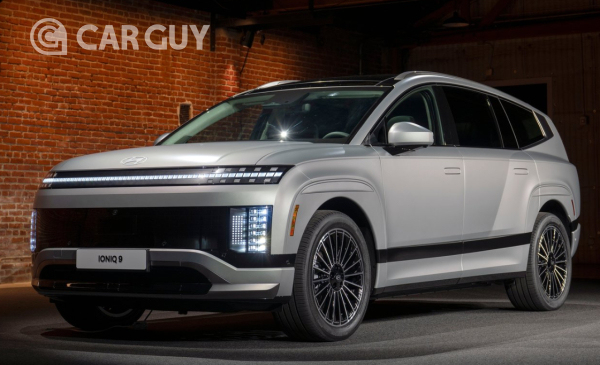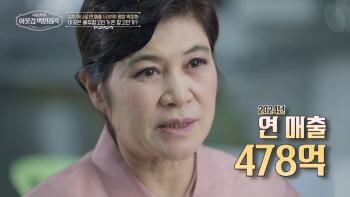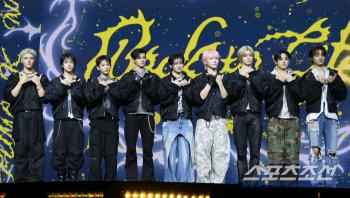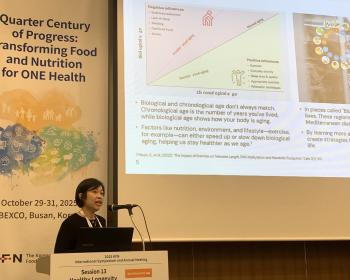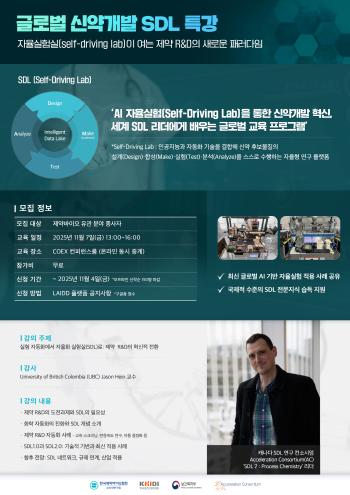Hyundai Motor's flagship Ioniq 9..3 Reasons Why Domestic Demand Is Slacking
Apr 08, 2025
|
EV9, which debuted two years earlier, made an early splash, recording 13,67 units in eight days at the time of pre-contracting in Korea. However, with the actual price, the market reaction has cooled down and the volume of domestic sales for two years is simply shabby.
Even considering various circumstances, it can be expressed that it has failed to enter the domestic market by looking at sales alone. Is that why! Hyundai's Ioniq 9 returned earlier this year with specifications that were ahead of schedule in all aspects compared to EV9 after delaying its launch by a year.
On top of that, the Ioniq 9 starts at 67.15 million won, which is 1.42 million won cheaper than the EV9, with super precipitation that further lowers the starting price.It succeeded in attracting attention by adding a starting price of 67 million won.
In addition, if the second-generation Palisade, which appeared around the same time, adds a hybrid power train and purchases a full-option specification, the price range of nearly 70 million won can be seen as a factor that arouses interest in Ionic 9.
Considering that it appeared around the same time earlier this year and a similar price setting, Hyundai Motor is believed to have intentionally set up a strategy to focus on the Ioniq 9 rather than the Palisade.
In fact, direct comparison is inevitable from a consumer's point of view because the two vehicles are similar in size and have three rows. Ioniq 9 started pre-contracting on February 3 and officially shipped on February 13.
According to the February sales tally, it ranked 42nd in the sales of domestic cars with 183 units. Considering that it is a two-week sales tally and is in the early stages of its release, and the timing of the subsidy implementation, it is not a very good performance. The EV9 did the same, but the price range of the Ioniq 9 still seems to be insufficient to boost sales to popular sales.
There are three main reasons for this. The first is still an onerous price point. Although it has succeeded in attracting attention for now by setting a starting price of 67.15 million won, there are only a few electric SUVs in the same class to compare.The most similar one is EV9. Luxury imported SUVs are priced at around 100 million won, so they are relatively cost-effective.
But the demand to buy electric cars at that price point is actually very small. Consumers seeking large SUVs tend to turn to hybrids such as Palisade. Eventually, Ioniq 9's competitors will be EV9 or Palisade hybrids.
Let's analyze the price tag to buy the optimal Ioniq 9. First of all, there is a high probability that SUVs will add four-wheel drive with a high selection rate. This is because more stable driving is possible in various road conditions even if fast acceleration is not required.
As a result, I'll choose the constant AWD, choose the most basic trim, the exclusive trim, for cost-effectiveness, and then calculate the price range for thread purchase.
The final vehicle price is 72.6 million won when parking assist and built-in cam 2 convention plus three options are added. The Seoul Metropolitan Government subsidy is 3.03 million won, and the actual purchase price is 69.56 million won. Even though it was selected as the basic type, the purchase price is about 70 million won.
Actually, the most purchased trim is the calligraphy trim. If only built-in cam 2 is added to the performance AWD, the actual purchase price is 81.98 million won. If the performance-type Seoul Metropolitan Government subsidy of 3.04 million won is applied, the final price is 78.94 million won.
As mentioned earlier, it is true that the cost-effectiveness is good compared to imported equivalent models. However, compared to Hyundai-Kia hybrid SUVs, the price is still more than 10 million won, making it difficult to create a lot of demand.
In the case of the new Palisade, which has significantly increased its price by launching the second-generation full-change model, it costs 58.8 million won when including the built-in cam when purchasing a gasoline four-wheel-drive calligraphy trim. The hybrid two-wheel-drive calligraphy trim costs 63.95 million won with built-in cam.
Based on the basic exclusive trim, the actual purchase price will be further lowered to 48.1 million won for gasoline four-wheel drive and 52.74 million won for hybrid two-wheel drive. Theoretically, it can be estimated that there will be quite a lot of demand for better-performing vehicles by paying 10 million won or more, but the average selling price of domestic cars in the same class is 53 million won.There is a limit to the demand for domestic vehicles in the price range above that.
The reporter is currently operating an Ioniq 6 electric car. Since they are very satisfied with the affordable maintenance cost of electric vehicles, they will choose the Ioniq 9 even if they pay more than 10 million won, but general consumers seem to think differently.
In fact, most consumers who compare the two vehicles often choose Palisade Hybrid in the KRW 60 million range. As a result, sales of Ioniq 9 are unlikely to increase for the time being.
In the end, if the price of raw materials such as batteries falls and manufacturing costs are reduced, and electric vehicles reduce the price difference with hybrid vehicles, Hyundai Motor can produce the sales volume it wants.
The second is the perception of vague anxiety and discomfort about electric vehicles. This problem is not actually limited to Ioniq 9. This is the homework that all electric vehicles have based on the domestic market. First of all, the fear of electric vehicle fire caused by the Mercedes-Benz electric vehicle fire incident last year can also be seen as having a negative impact on sales.
Hyundai Motor is trying to dispel such anxiety in various areas by strengthening the function of checking the battery condition more frequently in BMS, which monitors and manages the battery, and guiding the driver in advance if a problem is expected.
It is also studying how to put out the fire from various angles. For example, various methods are being introduced, such as a method of evolving by drilling a hole in the lower part of the battery. Once consumers' anxiety about this part is reduced, sales of electric vehicles with quite a bit of the same price range as the Ioniq 9 will be able to increase slightly.
The inconvenience of charging, which has been steadily raised, is also a factor that makes people hesitate to purchase. It is a welcome factor that it can be charged faster than before at highway rest areas when driving long distances by increasing the speed of rapid charging. However, the satisfaction level of charging at home or office varies depending on the purchaser's charging environment.
As a result, the desired sales volume is expected to follow only when the supply of electric vehicle charging stations is sufficient. The first reason for the Ioniq 9's sluggish sales is the Ioniq 9's price range, and the second is the fear of vague electric vehicle fires and the lack of Hyundai Motor Group's electric vehicle charging stations. This is a different factor from Tesla's wide-ranging charging network, including superchargers, in Korea.
The third is the anxiety of the ICCU (integrated charging control unit) and the last E-GMP vehicle. Among Hyundai Motor Group's electric vehicles, the ICCU problem of E-GMP vehicles using 800V continues to emerge. Problems have also been reported in Kia EV3 using the 400V system, but there are far more cases of problems with 800V vehicles.
Defects in Ioniq 5, Ioniq 6, and EV6 are typical. If damage is accumulated in the ICCU, which integrates and manages electricity in various charging environments, the 12V battery charging system may go wrong and the vehicle may stop while driving. The company is replacing software updates and ICCU itself through recalls, but no fundamental solution has been released yet.
Even after replacing the ICCU, there are cases where the failure occurred again and the replacement was made again. According to Hyundai Motor's announcement or overseas report, the probability of occurrence is around 1%. If the total sales of the vehicles are estimated at 700,000 units, it is equivalent to about 7,000 units.
99% of customers, including reporters, may not experience the problem, but they have anxiety about not knowing when they will be the main characters of the 1% case. The Ioniq 9 is also an E-GMP vehicle using an 800V system, which can be seen as having the same problem.
Although there have not been many reports of actual cases due to the lack of sales, only a small number of people who have recognized this problem in advance sometimes delete Ioniq 9 from the purchase list.Hyundai recently announced its new infotainment system, Pleos.
New designs, interfaces, and bold steps to beat competitors are positively welcome. However, the problem is that the gap between the new system and the current system is large. The application of PLEOS has been announced since 2026. In this case, the fact that the last electric vehicle to which the ccNc system was applied is the Ioniq 9 can be seen as a factor that makes people hesitate to purchase it.
Ioniq 9 is a large electric SUV that has a very high degree of completeness when it is actually operated, despite these various sales obstacles. However, the market environment, which is still lacking in many ways to gain popularity by starting from the price range, is a stumbling block.
The attraction is that it was launched ahead of competitive global brands and there are not many competitive vehicles. It is expected to show sufficient competitiveness in the North American market, which prefers large SUVs. If the Trump administration's mutual tariffs are properly resolved.
Editor Song Moon-cheol mc.song@carguy.kr
This article was translated by Naver AI translator.
